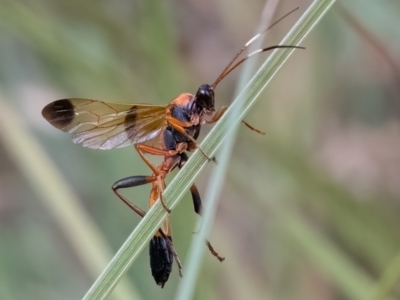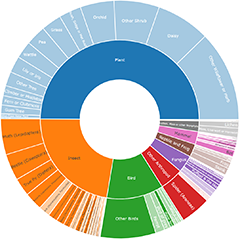Parasitic wasps (numerous families)
Announcements
There are currently no announcements.
Discussion
Miranda
wrote:
8 Dec 2025
It's been suggested on another forum that these are trichogrammatidae and are hanging around so they can parasitise the beetle's eggs? @SimoneC @KimPullen
Chalcidoidea (superfamily)
TimL
wrote:
6 Nov 2025
Thanks @WendyEM As you say, these are tiny wasps and usually very active, so the process is to use a fast shutter speed together with diffused flash which usually produces sharp, bright, evenly lit images. To get most of the wasp into focus it also helps to use an aperture size that gives a depth of field appropriate for the wasp's size and to try and take the images looking straight on at the wasp either from the side or from above such that the insect falls within the depth of field. Makes all the difference. NatureMapr's DSLR photography guide provides some advice on this subject. Hope this helps. Tim
Torymidae (family)
WendyEM
wrote:
6 Nov 2025
thanks Tim. Great photos! I had photographed one of these tiny wasps in a flower here (s Vic) the day before. Great photos considering size and energy of these fellas.
Torymidae (family)
MichaelMulvaney
wrote:
28 Oct 2025
It will be on the hunt for a moth caterpillar in which it will use its long black needle "stinger" or ovipositor to lay her eggs in. The eggs hatch inside the alive caterpillar and the wasp larvae slowly eat their way out. Pretty gruesome.
Lissopimpla excelsa
Significant sightings
- Cardiochilinae sp. (subfamily) at Hall, ACT
- Cynipoidea (superfamily) at Melba, ACT
- Mesochorinae (subfamily) at Melba, ACT
- Temelucha sp. (genus) at Cook, ACT
- Phanerotoma sp. (genus) at Melba, ACT
- Diplazon laetatorius at Florey, ACT
- Ichneumonidae (family) at Hackett, ACT
- Figitidae (Family) at Casey, ACT
- Agamerion cleptideum at Bruce, ACT
- Tetramesa sp. (genus) at Molonglo River Reserve
Top contributors
- Hejor1 349
- TimL 205
- kasiaaus 182
- AlisonMilton 166
- CathB 108
- jb2602 89
- ConBoekel 71
- KylieWaldon 67
- Roger 59
- Harrisi 56
Top moderators
- SimoneC 1K
- MichaelMulvaney 519
- KimPullen 214
- MichaelBedingfield 145
- Amata 91
- DiBickers 80
- KimberiRP 43
- RogerF 22
- jb2602 10
- donhe 9



















































